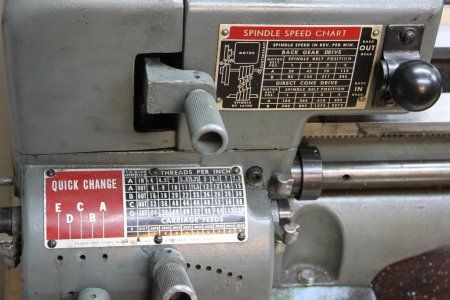Might seem contrary but just by fooling around my experience is slow carriage feed is not always the answer to a good finish cut. I have found that stepping up the chuck rpm's a mite, give the carriage feed a little boost in rate, use a fine, not over .004" cut and a WELL formed, SHARP HSS tool with a little cutting fluid of choice and I can get a nice soft satin finish pretty much on demand.
When the day comes to sit and ponder the many wonders and secrets, chuck up a piece of scrap and experiment. Amazing the little unknowns that just run out on to the floor if you don't have a box to catch them all in! Translation: You can learn alot if you are not worried about messing up a 98% finished piece of work, and just go to cutting with only final finish in mind. This is how I figure out a lot of things on my own. Makes me look well, real smart sometimes! :thinking:

